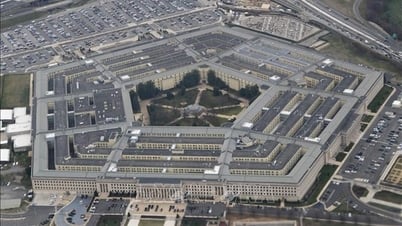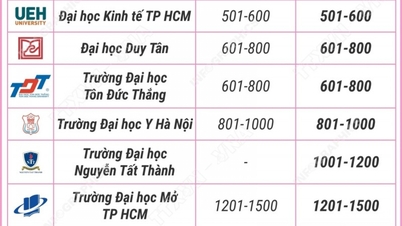According to the Defense News website, US defense officials have identified hypersonic weapons – which have a minimum speed of Mach 5 (five times the speed of sound) – as a “game changer” in future conflicts. National Defense Magazine cited a new report published by the National Defense Industrial Association (NDIA) saying that senior Pentagon officials determined that Washington would need hundreds of hypersonic weapons “in a short period of time” and that the number could even be “thousands or tens of thousands”.
Speaking at the report's announcement, Congressman Doug Lamborn of the US House Armed Services Committee also affirmed that Washington's development of hypersonic capabilities is "nothing to argue about".
The Pentagon has publicly stated that it has 10 hypersonic weapons programs in the research and development phase. The first of these programs could move into production as early as this year. According to Defense News, the NDIA asserted that the transition from the development and testing phase of hypersonic technology to the production of weapons in large quantities will require “a focused budget and effort” from the Pentagon towards the US defense industry.
Normally, the transition alone would be a challenge. Defense industry executives and experts say the problem will become more complicated as Washington attempts to replenish its arsenal while continuing to increase military aid to Ukraine. “In addition to accelerating the hypersonic weapons program, the Department of Defense still needs to replenish its arsenal. This could be a good thing for the U.S. defense industry, but it is certainly a challenge,” Jason Fischer, a senior representative of Northrop Grumman Corporation, told Defense News.
Mr Fischer said US defence companies are receiving “more and more frequent” requests from the Pentagon to produce conventional missiles “in shorter time frames”, a situation the US defence industry is “most difficult to manage” as it often requires additional investments in facilities and equipment.
Meanwhile, according to Marty Hunt, a senior official of Dynetics Corporation, Washington's need to fill its arsenal "makes it more difficult" to access the raw materials needed to produce hypersonic weapons. Along with that is the need to "shift the highly skilled workforce in the field of hypersonics to production lines that are in high demand." "This has a negative impact, possibly slowing down the implementation of hypersonic weapons programs," Defense News quoted Mr. Hunt.
According to The Washington Post, the Washington-based Center for Strategic and International Studies (CSIS) said that the current production rate of US defense corporations “may not be enough to prevent the depletion” of the main weapons systems that Washington is providing to Kiev. Even if the production rate is accelerated, it may take the US at least 5 years to “restore the stock of Javelin anti-tank missiles, Stinger surface-to-air missiles and other necessary weapons.”
In another study, CSIS estimated that at peacetime production rates of the domestic defense industry, it would take the United States 15 years, and more than eight years at wartime production rates, to replenish key weapons systems such as guided missiles, manned aircraft, and armed drones if they were destroyed in combat or given to allied nations.
Meanwhile, in the field of hypersonic weapons, Congressman Lamborn also pointed out that although the US is ahead, it is behind its competitors. According to CNN, in the world , only Russia and China are known to possess "deployable" hypersonic weapons.
HOANG VU
Source
















































































































Comment (0)